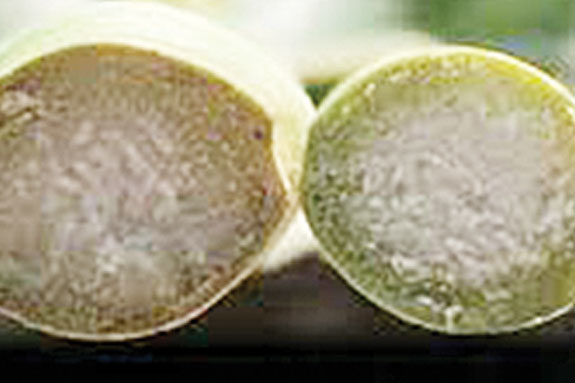This has been influenced by the high price of feed, especially corn, and corn silage’s high energy content, which can substitute and reduce corn inclusion rates.
Due to the high yield potential of consistent forage, producers can harvest as many tons in a week as they can struggle to put up good alfalfa all summer long.
While the U.S. average of corn acreage harvested as corn silage is approximately 8 to 12 percent in dairy areas of Minnesota and Wisconsin, the portion can run as high as 25 to 35 percent of the acreage.
Many farms now harvest 1,000 to several thousand tons of corn silage per year. With this much corn being harvested as corn silage, producers want to know which hybrid type – BMR, conventional, dual-purpose, leafy or some other – is the best choice for their particular farm operation.
There are several factors, both agronomic and animal, that need to be considered.
One of the first criticisms of planting BMR corn is that there is a yield drag. The question is: A yield drag of what? Typically, BMR will have a 5 to 10 percent decrease in dry matter yield.
However, we know from many research trials, we will get a significant increase in NDF digestibility and dry matter digestibility.
If we calculate yield X digestibility and compare those differences, the advantage may go to BMR corn silage. If we applied the same logic to alfalfa, we would take just three cuttings instead of four or five.

We do not have a cutting interval or PEAQ stick to use for corn silage.
We need to shift our thinking away from dry matter yields alone and begin to think about yields of digestible nutrients per acre, whether that is digestible NDF, crude protein or even energy yield.
Another criticism of many silage corn varieties, BMR included, is that they are lower in starch content. This may be the case, approximately 10 percent lower when compared to other conventional corn silage varieties.
However, reported research in the Journal of Dairy Science showed similar starch content when compared to silage-specific varieties. Digestibility of the starch is similar at comparable harvest moistures and processing.
Strategies to consider for increasing starch content are going to a fuller-season hybrid and planting on the lower side of plant populations.
In a silage field, full-season hybrids can be five to 10 days longer maturity than what would normally be grown for grain because concern for getting the field to black layer is not as important as it is with grain. The greater expected yield potential with longer-season hybrids often makes it worth the risk.
If we also harvest the corn grain as high-moisture corn, we don’t have to worry about drydown. If anything, the risk is greater of silage and high-moisture corn becoming too dry.

Thus, the maturity range of hybrids planted on a farm can be greater if both corn grain and silage are being produced, helping to minimize the risk of weather problems during a particular growth stage (particularly pollination/silking) and spread the workload during harvest.
Growers should plant the majority of their corn acreage in the full-season maturity range and less in the mid-season or shorter-season range.
A consideration needs to be given to how long it takes you to plant and how long it takes to harvest either the silage or high-moisture corn and make adjustments accordingly.
How many hybrids should you choose? At 100 acres or less, I would focus on two varieties of the highest-performing hybrids for your area. If I am planting 1,000 acres, I may go up to four or five.
What are the animal factors that need to be taken into consideration? What are your production goals? If you are trying for higher-than-average milk production, I think BMR corn silage will be beneficial.
That being said, the best corn silage will not guarantee high milk production – but neither will poor corn silage. We know from Michigan State research that as NDF digestibility is improved, we will generally see an improvement in dry matter intake (DMI) and most likely in production of fat-corrected milk.
It is best to position BMR corn silage where DMI may be limiting production, such as transition cows, early lactation and peak lactation.
Greater peak milk almost always translates into greater total lactation yields. Greater dry matter intake may also reduce bodyweight and body condition losses, which can translate into improved reproductive performance.
Other factors that are being considered are improving rumen function by increasing the total amount of NDF in the diet, the total amount of effective NDF, reducing corn amounts and lowering starch content in the diets.
We have repeatedly observed that cows fed BMR corn silage will tend to eat more. This is usually a good thing but not always if the cows don’t milk more. Why do cows eat more? The BMR corn silage may be not only slightly lower in NDF, but the NDF also digests faster.
How full a cow is relates to how much NDF she eats and how fast it digests. One factor in feeding a cow is rate and extent of NDF digestibility.
If NDF digests too fast, as can happen with BMR, it moves out of the rumen before it is digested as much as it can be. However, if NDF digests slowly, a cow stays filled up too long and cannot eat as much as she needs. This is what happens with poor-quality forage.
New corn silage harvesters can chop longer particles and process them for greater digestibility. Recent Wisconsin research has shown an advantage to cows fed “shredlage” – corn silage chopped at over one- inch theoretical length of cut and processed with a new type of roller.
The combination of longer fiber length and the different processing may be very beneficial to BMR corn for silage. Because of its faster rate of NDF digestion, physically effective NDF may be a concern when feeding high levels of BMR corn silage.
If we want to feed greater amounts of corn silage in order to save on overall feed cost, it is necessary to increase the particle length of BMR corn silage in order to avoid some of the problems we have seen in the past.
Among these have been cows that develop acidosis due to a lack of cud chewing and natural buffering. It is extremely critical to get an accurate rate of NDF digestion and utilize nutrition models that use a rate of digestion. Forage analysis should include a 24-hour or 30-hour NDF digestibility.
What about the economics? All corn seed is expensive and BMR is on the high side. That along with needing to plant an additional 10 percent or more increases seed cost.
But with the high price of feed, being able to use more forage, more home-produced feed and increase production – this may improve overall profitability. My conclusion – if done correctly, BMR corn silage will allow us to improve profit per cow and profit per acre. FG
PHOTOS
PHOTO 1: BMR stalk (left)– cross section
PHOTO 2: BMR (left) leaf












